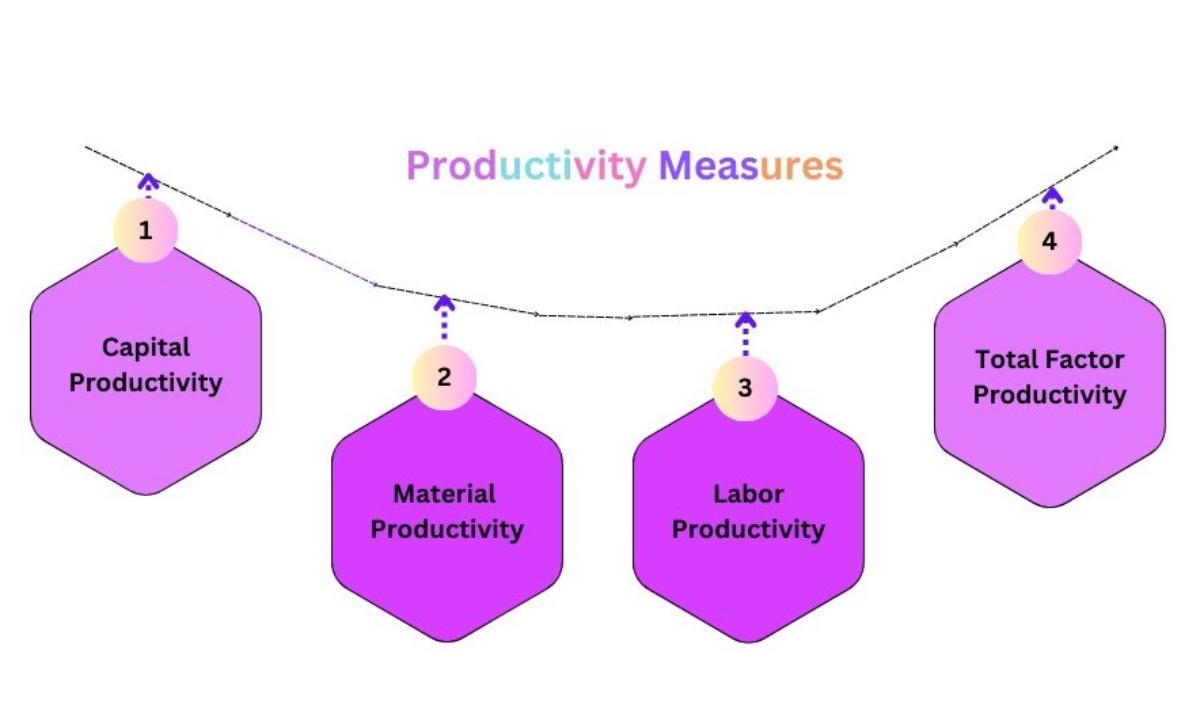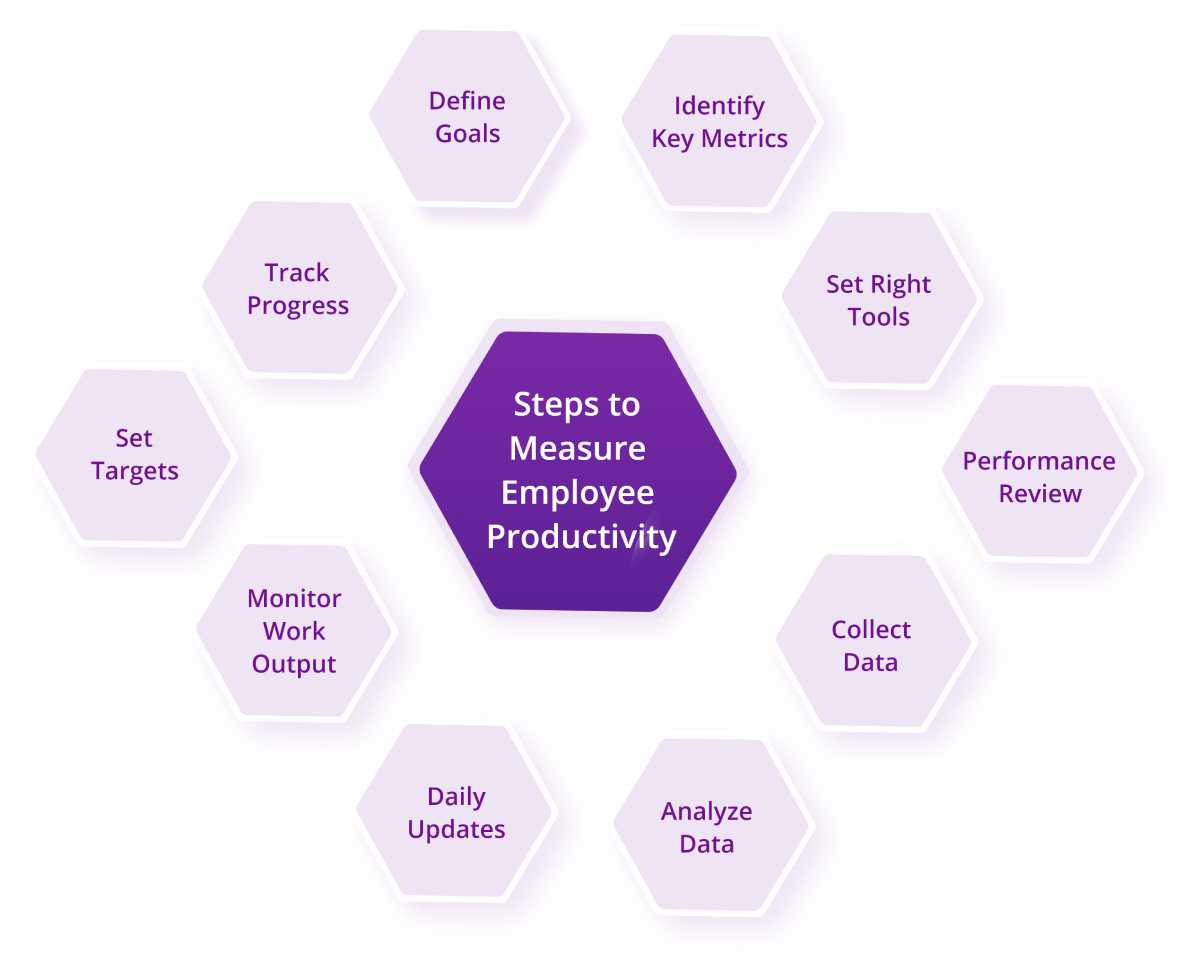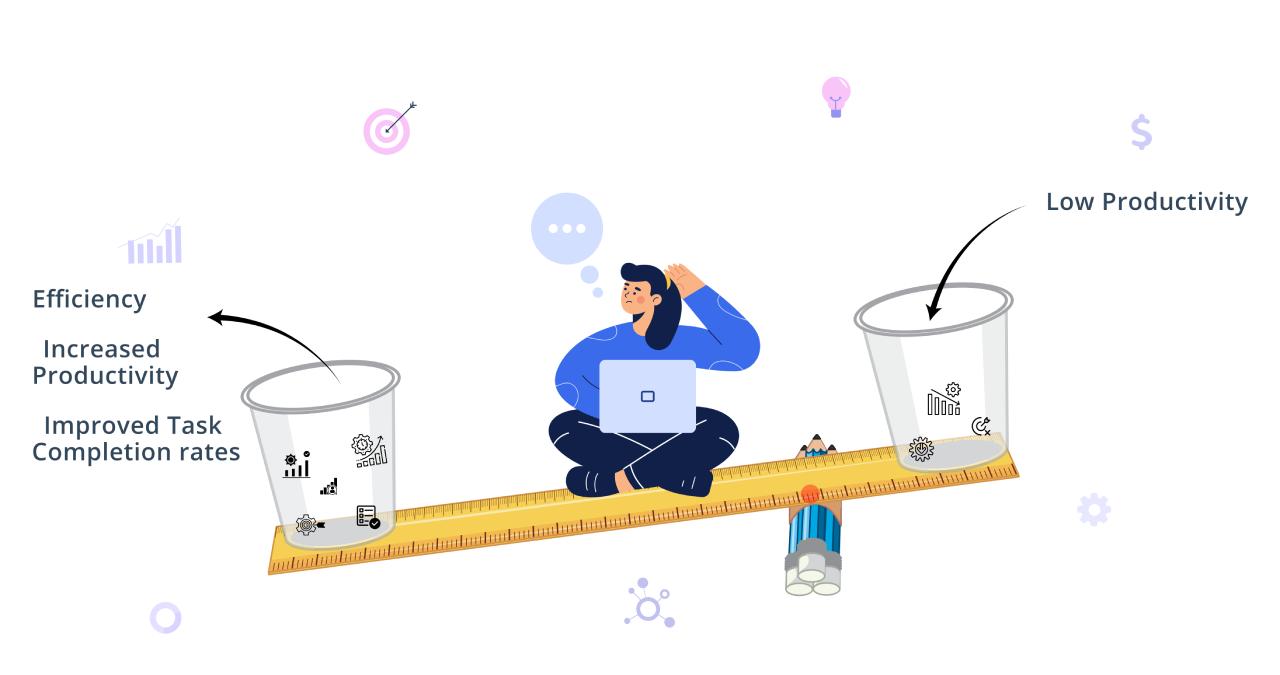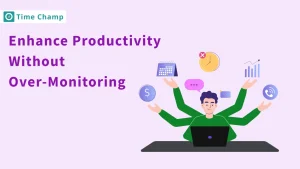Did you know?
A 10% increase in employee productivity can boost your profits by 20%
Now, if you don’t know what employee productivity is, it is generally defined as the ability of a worker to perform work and achieve the desired results in the organization. It is all about how much work they can do in a given period while ensuring that the quality of the work is high
Just imagine that you have a group of employees working on a project. Productivity is about how far they can progress on that project per day, how well they work with each other, and how they can manage their time to meet deadlines.
What is the Importance of Employee Productivity?
Let me tell you a quick story of how a business in the late 90s suffered from poor workforce management. A company named Apex Manufacturing started off with 200 employees as its reputation grew the company and its employees grew, managing such a huge workforce and knowing who was working and who was not was a challenge to them.
You may wonder why to measure productivity, well employee productivity is significant for the success of any business as it contributes to the efficiency and profitability of the company and the overall positive workplace culture.
- Getting Things Done Faster: When employees work efficiently, tasks are completed more quickly.
- Boosting Revenue: Better productivity boosts the revenue for the company.
- Creating a Supportive Atmosphere: Productivity motivates and engages employees.
- Increasing Happiness at Work: Achieving tasks lifts morale among employees.
- Encouraging Loyalty: Satisfied employees tend to stick around longer.
- Delighting Customers: Timely service leads to happier customers.
- Opening Doors to Progress: Productivity can lead to the way for career growth.
- Staying Ahead of the Competition: Efficient organizations have an edge over rivals.
Fun Fact
Working extra hours does not necessarily imply productivity among the employees.
How Employee Productivity is Helpful in Workplaces?
Getting things done efficiently is key in every task, especially at work. Here’s how employee productivity is helpful in workplaces.
- Efficiency: Productive employees help complete the work on time and time-wasting, manpower and materials. This efficiency reduces the organisation’s cost and makes work easier to manage.
- Effectiveness: Productive employees do not only work faster but also do a good job. They are goal-oriented and aim at getting the desired outcomes that enhance project delivery efficiency and customer satisfaction.
- Profitability: Employee productivity is directly related to the profitability of an organization. Productivity is beneficial to the company because it helps to reduce production costs and improves production and sales.
- Employee Morale: Productivity culture is a good culture in the workplace where employees are valued and encouraged to work. Employees are contented and efficient when they can perform their tasks and contribute to the company.
- Team Collaboration: Productive employees are more likely to engage in conversations with their colleagues and work together to accomplish organizational goals. This collaboration improves the working relationship, promotes creativity, and improves the performance of the whole organization.
- Customer Satisfaction: Productive employees are crucial in delivering good customer service and customer satisfaction. They assist in building long-term customer relationships and loyalty by recognizing customer needs and addressing them immediately, providing high-quality products or services, and delivering more than customers expect.
- Adaptability: Productivity is a very important concept in business today because it is the basis for organizational flexibility and responsiveness. They can deal with changes, challenges and opportunities and therefore the organization can remain competitive in the dynamic markets.
- Continuous Improvement: The emphasis on productivity is helpful in the development of a culture that will make the employees strive to make the firm better. Employees are expected to look for ways to improve productivity, reduce waste, and develop new products and services to ensure the organization’s continued success.
Types of Productivity Measures

Discover the various approaches to productivity measurement and identify which one best suits your organization in terms of evaluating the performance of workers.
1. Capital Productivity
- It is used to measure the efficiency of physical resources like machines, tools and structures.
- It deals with the use of assets, the cost of maintaining assets, and the depreciation of assets.
- Interested in the efficient allocation of capital to achieve the highest possible level of production at the lowest possible cost.
- Analyzes the company’s performance in terms of Return on Investment and Asset Turnover Ratio.
2. Material Productivity
- Relates to the efficiency of the use of materials and resources in the production process.
- Emphasizes waste reduction and effectiveness to reduce costs.
- It includes material yield, scrap rates and inventory turnover.
- To help in the management of the supply chain and inventory.
3. Labor Productivity
- It is a measurement that indicates the effectiveness of the workforce in performing work and attaining objectives.
- Deals with the number of hours worked per employee, the availability of employees to work and the cost of labor.
- Concerns about the employees’ abilities and competencies and their level of motivation.
- Interested in the effectiveness of work, the time spent on work, and the performance of employees through training and development.
4. Total Factor Productivity
- Refers to the productivity of all the factors of production.
- Concerns the total product in relation to the total resources like labor, capital, raw materials, energy and technology.
- Emphasizes the improvement of the performance of the organization.
- Focuses on technological advancements, process innovation and economies of scale.
Methods to Measure Employee Productivity
I assume you have figured out which productivity measure suits your business best, what next? You need to measure productivity, right? So, let’s look at some of the methods that can be employed to measure the performance of the employees in their duties.
Quantitative
This method focuses on the assessment of the productivity level with the use of quantitative data. It may contain such things as the number of sales, the number of tasks completed, or the time spent on some activities. Quantitative measures are more objective and have definite numerical values that can be easily compared over time.
Objective-Based
In this case, productivity is defined by the extent to which the employees are accomplishing certain goals or targets. These could be sales goals, project or customer satisfaction goals among others. In this way, managers can assess whether the employees are meeting the expected level of performance and whether they are contributing to the achievement of organizational objectives.
Task-Based
Task-based measurement focuses on the extent to which the employees are accomplishing the tasks or fulfilling the assignments. This may include the time taken to accomplish the tasks, the quantity and quality of work done, and the extent to which the set deadlines were met. When the projects are divided into tasks, the managers can determine what needs to be changed and can provide the workers with useful advice and encouragement.
Steps to Measure Employee Productivity in Workplaces
Done looking at the methods? Gear up and try these easy steps to measure employee productivity in your organization.

1. Define Goals
Objectives are the first step to a good job. Establish clear goals so that employees know what is required of them.
2. Identify Key Metrics
Determine the KPIs that apply to the employee or the department to assess the employee’s performance. These could be sales targets, project completion rates, or customer satisfaction.
3. Select Right Measurement Tools
Make the right choice when selecting productivity measurement tools as it will determine the accuracy of the collected data. Some tools that can be used to facilitate this process include time-tracking software, performance management systems, and feedback platforms.
4. Conduct Regular Performance Reviews
Conduct regular performance evaluations to check on the employees’ performance about the set goals and KPIs. Offer suggestions and guidance to enhance performance where necessary.
5. Collect Data
Data should be collected to have a meaningful analysis. Collect your data from various sources such as feedback from employees, project progress, and performance reviews.
6. Analyze Data
Analyze the collected data because statistics are crucial in identifying trends, strengths and weaknesses, and decision-making. Data analysis assists in establishing trends that can be applied to improve the efficiency of productivity strategies.
7. Daily Updates
Get daily updates as it is important for evaluating and increasing the employees’ performance. This involves establishing a routine where employees report on their daily progress, challenges faced, and tasks completed each day.
8. Monitor Work Output
Measure the quantity and quality of work accomplished by the employees in a given period. This could include tracking of tasks that have been accomplished, projects that have been done or sales made.
9. Set Performance Targets
Set objectives for your teams and explain to them what they should be doing and how they can contribute to the group. These targets should be realistic, but they should be set at a high level to maintain growth.
10. Track Progress
Track the progress of the set goals and adjust things properly when they are not going right. Tracking the progress of the goals helps in the visibility of performance levels.
Use a Productivity Tracking Tool Like Time Champ
Keeping in mind all the problems employers faced all those years we have found an affordable yet effective software that can answer all of your queries and solve your concerns.
Time Champ, is a time and productivity tracking software that tracks every activity of your employee and provides you with insightful and accurate productivity reports generated truly based on your employee’s real-time activities.
With features like attendance management, project management, task tracking and location tracking you can obtain a complete view of your employee productivity.
You don’t need to put in a lot of effort. Just book a demo, and all of your queries will be answered. You can access a free 7-day trial. Try for yourself and then commit to it.
Enhance Your Team Productivity Now!
Try Time Champ for yourself and then make your commitment
Signup for FreeBook DemoChallenges in Measuring Employee Productivity
There’s a saying that goes like this: If you don’t face challenges then that’s not a journey worth travelling. There should be some challenges and you should be the one to face them to see a brighter tomorrow.
As a manager, you may encounter several issues when it comes to the implementation of productivity measures in your organization. It is important to know these challenges so that they can be well managed and implemented.
Measuring Productivity for Remote Employees
- These traditional measures may not be adequate to evaluate remote work.
- It becomes difficult to keep track of the employees and their work when they are not physically present.
- It is therefore important to develop new tools and methods that are suitable for remote workers.
Taking Quality into Account
- The conventional metrics for measuring productivity are usually based on quantity over quality.
- Quality of work is a very crucial factor in productivity.
- The use of both quantity and quality indicators in assessing the performance of employees is more beneficial.
Dealing with Data Overload
- The amount of data coming from different sources is too much to manage.
- The processing of big data is very difficult.
- The issue is that there is just too much information, and this may affect the decision or lead to the wrong decision.
Conclusion
To sum up, employee productivity is an important aspect of business performance. All you need to do is define your objectives, determine the KPIs and select the right tools to monitor the progress of employee tasks. By following the processes discussed in this blog post you can create a more efficient and motivated workforce.
Frequently Asked Questions
Employee productivity is the measure of how effectively and efficiently employees perform their work and accomplish organizational objectives.
Task management is the process of allocating, monitoring, and overseeing the completion of tasks in an efficient manner.
It is recommended to take measurements at certain intervals for instance monthly or quarterly so as not to be very time-consuming while at the same time helping in the monitoring of progress.
These tools point out the strengths and weaknesses of the performance and where the employees can improve on their performance.
By identifying strengths and weaknesses, businesses can optimize performance, improve efficiency, and achieve their objectives.






